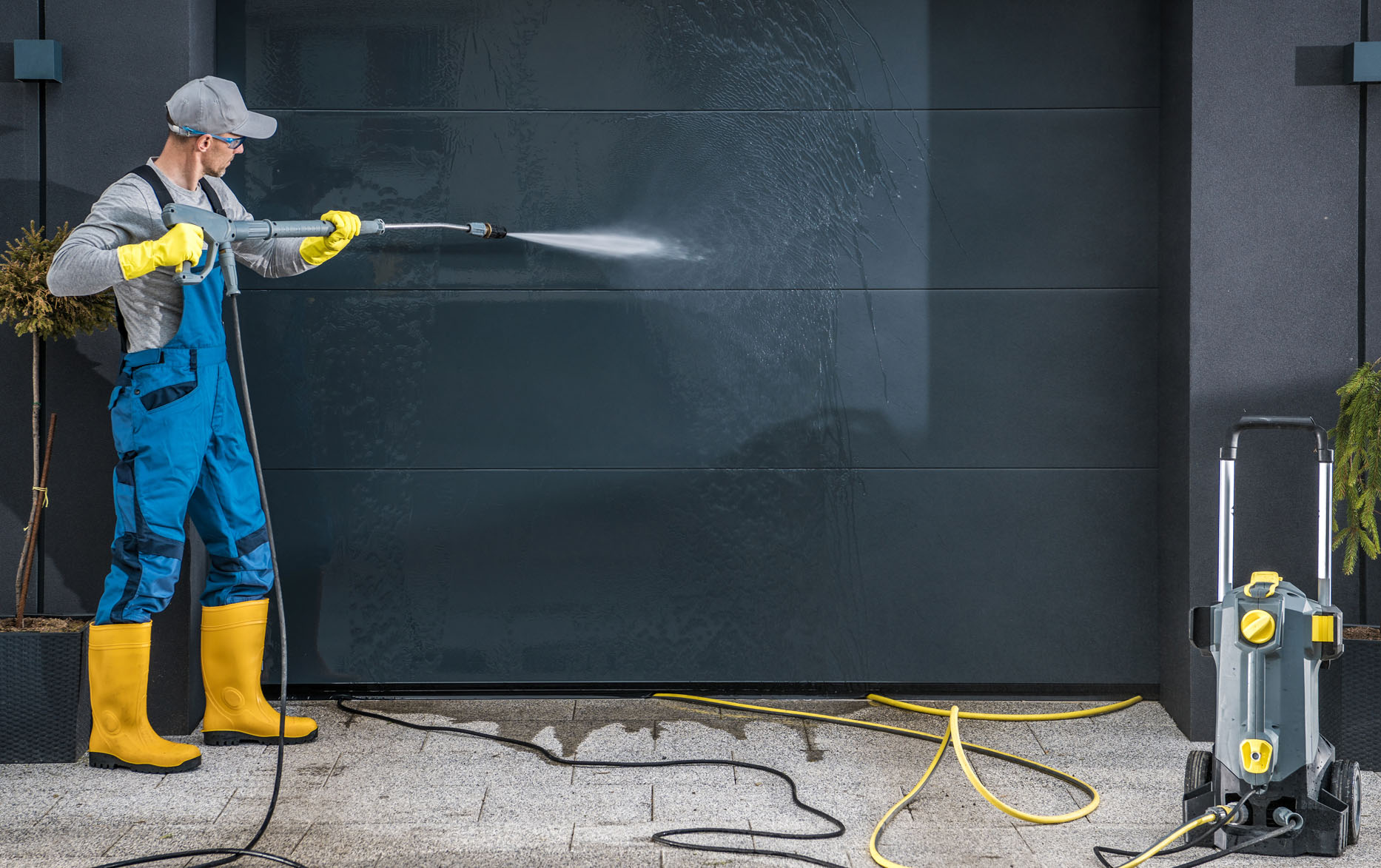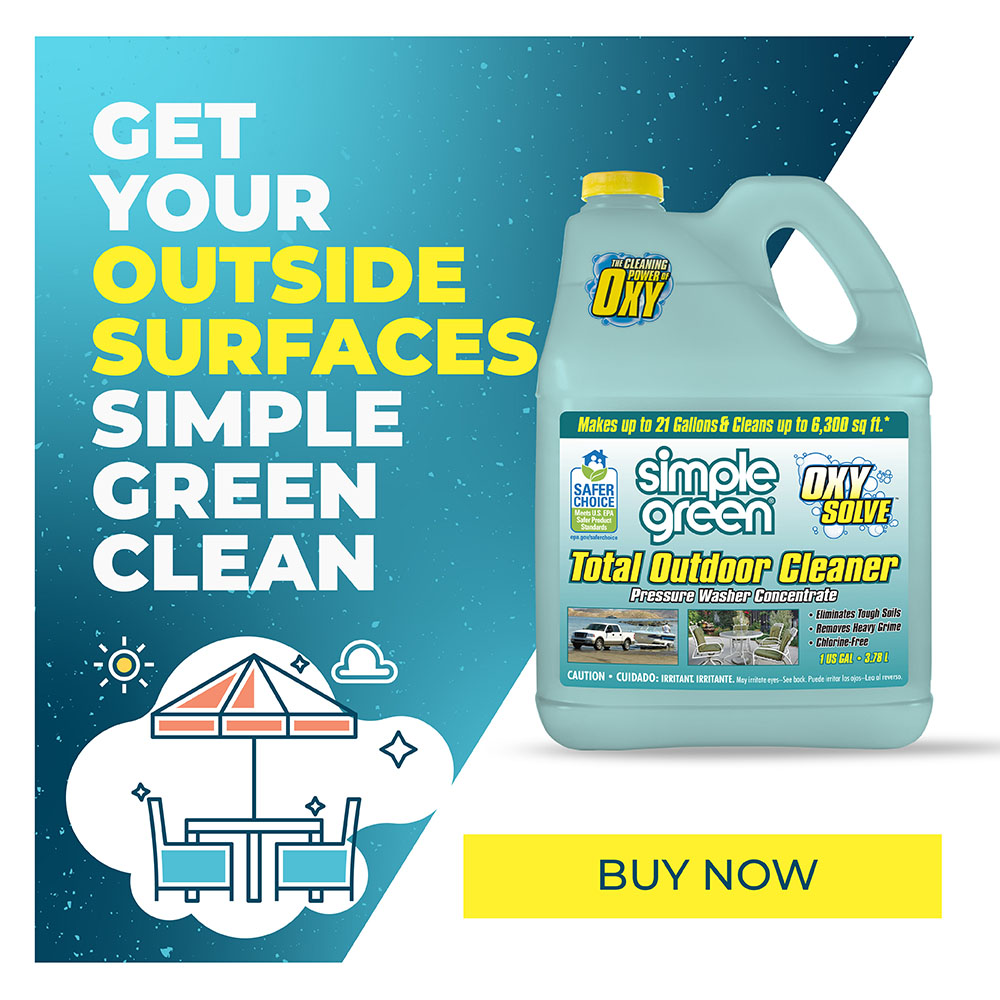

Putting your thumb over the end of a garden hose is good for rinsing debris and clearing surface dirt, but it's no substitute for the pressure or cleaning power of a pressure washer machine. Pressure washing eliminates the buildup and growth that contributes to deep stains, decay, and the erosion of coatings and structural materials.
The pressure washing process is a bit more involved than simply getting a machine and blasting away the grime. It's possible to cause significant, visible damage in the form of pitting, lines and surface degradation, which can lead to many additional problems and costly repairs.
Selecting and using a pressure washer doesn't have to be an intimidating process, however. Understanding proper equipment, technique and pressure washing cleaning products are essential to an effective and safe power washing experience, and to preventing damage to the surface you're cleaning, or yourself.


PSI and GPM
Pressure washer power is determined by two things: PSI (pounds per square inch), and water flow, called GPM (gallons per minute). Choosing the correct PSI is crucial in pressure washing, as the higher the PSI, the more force the water will have on the surface you're cleaning. If the PSI is too high, you can easily damage many surfaces.
The higher the GPM, the faster the cleaning and rinsing process tends to be because more water is being released. The lower the GPM, the longer the cleaning process will take, and a higher PSI will generally be required, risking surface damage.
See the chart below for appropriate PSI output for typical cleaning jobs:

Types of Pressure Washers
Electric Pressure Washers are convenient, light-duty machines. They tend to be cheaper and quieter and more portable than gas powered machines, making them ideal for residential jobs such as cleaning fencing and removing stains and dirt from concrete. They can also be used indoors, because there is no machine exhaust.
Gas Pressure Washers can deliver higher water pressure than electric, often more than 3,000 PSI. These are often used for deep-cleaning concrete, preparing siding for painting and more high-intensity cleaning jobs. However, this type of pressure washer often creates a loud sound and emits harmful exhaust fumes while running.
Importance of Nozzles During Pressure Washing
Choosing the wrong nozzle or spray tip for your pressure washing job could result in a number of problems and potentially costly damages. Concrete damage-scarring is common with improper tip use, as well as broken window seals, damaged wood or composite decks, puncturing the mortar on brick walls or driveways and more. High pressure water intrusion can also cause mold and mildew issues down the line.
Different pressure washer nozzles are required for different kinds of jobs. The more you restrict the flow of the water, the more you increase the velocity.
Types of Pressure Washer Nozzles
Pressure washers come with 3-4 color coded nozzle tips, or a convenient dial-type multi-spray pattern nozzle. You should use a pin to clear the pressure washer spray nozzle before each use.
How to Pressure Wash
You should begin pressure washing from 4 feet out, moving closer as appropriate. Always work in small sections. Remember that backing away from the surface while pressure washing reduces the pressure on it, regardless of nozzle selection. To remove tough buildup or stains, first move the spray closer to the surface to increase the effective pressure. If this doesn't work, change to a lower-degree nozzle.
When cleaning vertical surfaces such as siding, start from the bottom and work upward when applying cleaning solutions. Then rinse from the top down. Never spray up into siding, to avoid dislodging the paneling or driving water underneath the surface, potentially resulting in mold and mildew.
Be aware of where you're rinsing the grime from your pressure washing job.
Proper storage is important as well, to avoid damaging your pressure washing equipment. Always rinse the equipment before storage. Some products can cause corrosion to pressure washer parts. Look for a product that won't harm the surface you're cleaning, or surrounding surfaces.
Look for the Safer Choice Label
Responsible pressure washing around the home means responsible use of cleaning products. Be careful when selecting a cleaner.
Many pressure washer cleaning solutions are abrasive or corrosive, which can harm both landscaping and equipment.
The U.S. Environmental Protection Agency's Safer Choice program helps consumers select products to protect your family and the environment, without sacrificing quality or performance. When you see the Safer Choice label on a product, it means that EPA scientists have evaluated every ingredient for potential human health and environmental effects.
The EPA's Safer Choice program considers Simple Green a leader in safer product development and sustainability. A recipient of the Safer Choice label, Simple Green All-Purpose Cleaner can be used in pressure washers and on all washable surfaces, and easily removes tough dirt and grime without the use of caustic chemicals.
Simple Green's line of Oxy Solve products are Safer Choice certified and specifically designed for pressure washing without damaging surfaces or the environment.
Each product in the Oxy Solve line is specialized for different surfaces:
Learn more about Simple Green's Safer Choice products.
FEATURED ARTICLES